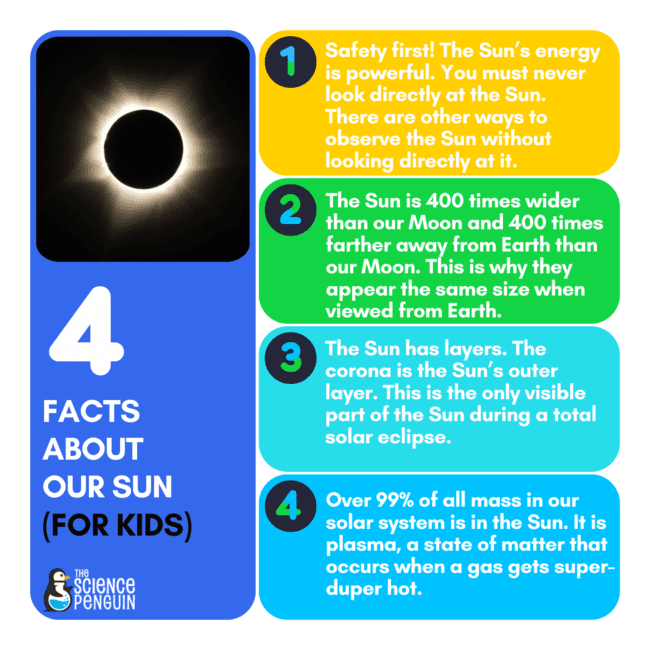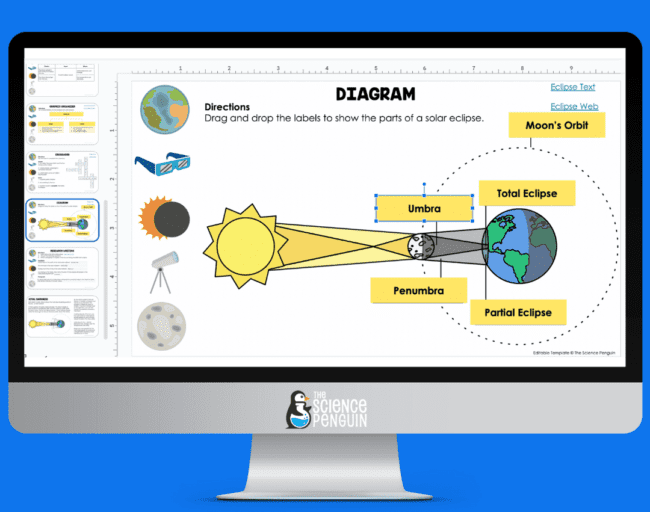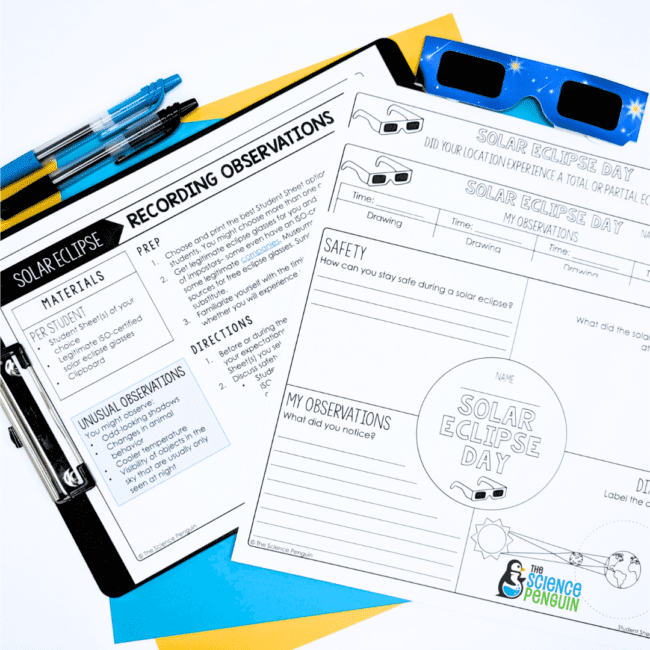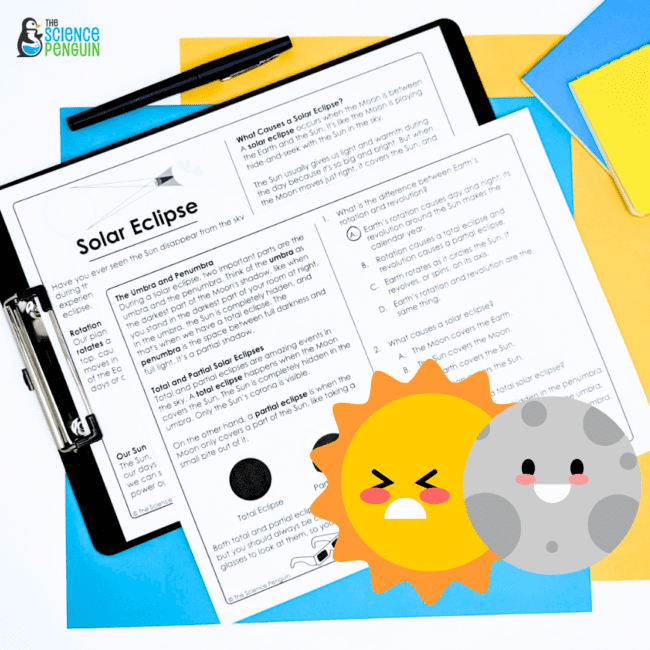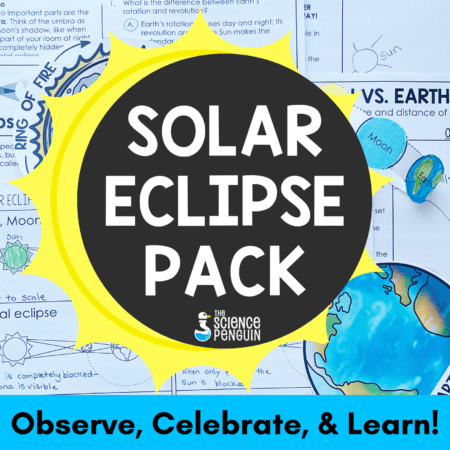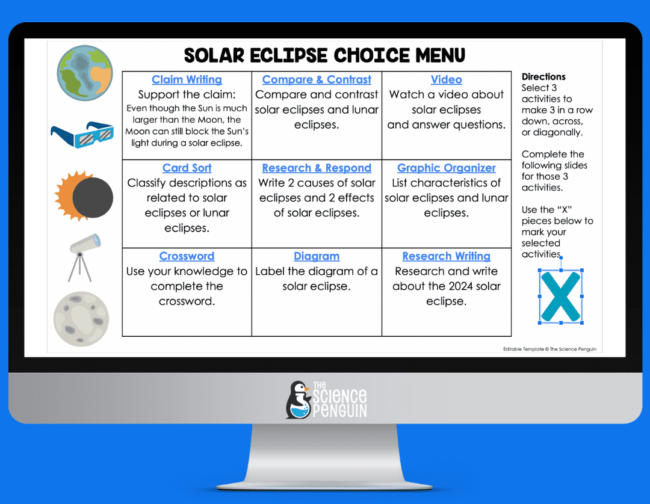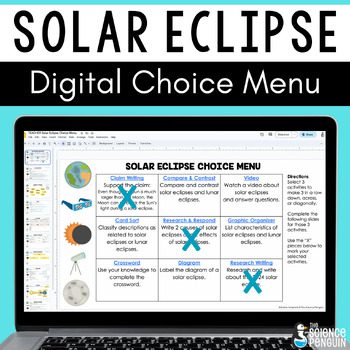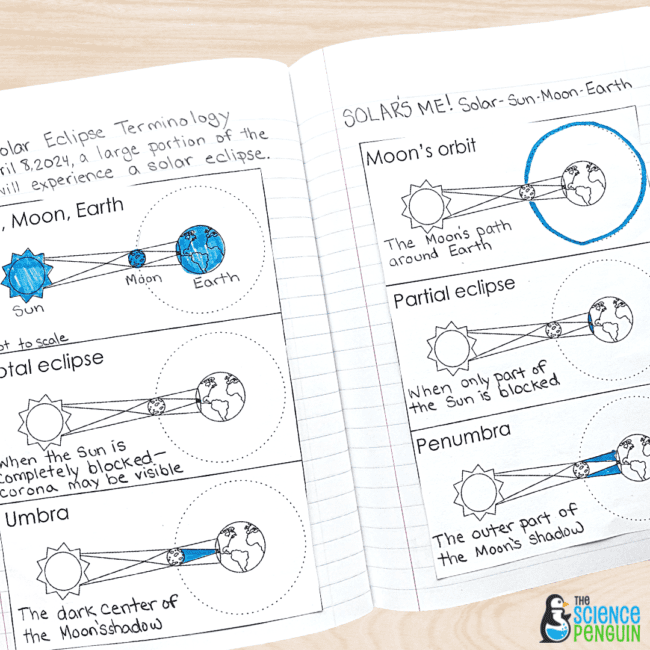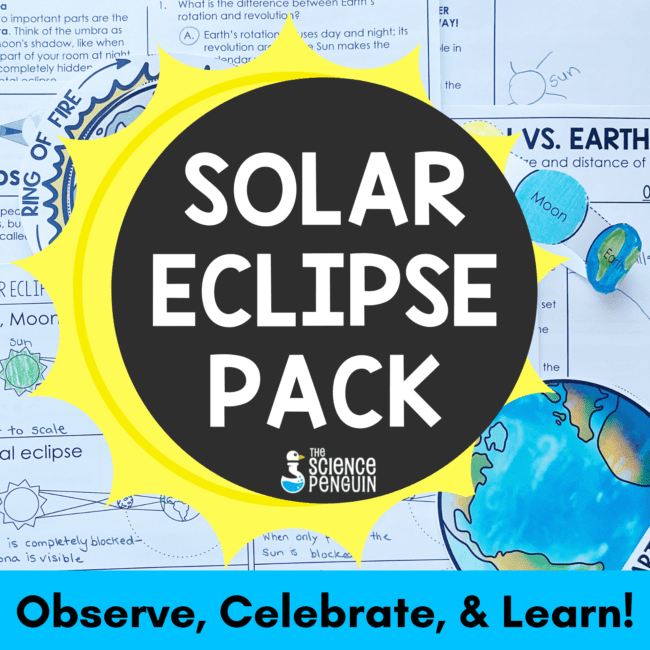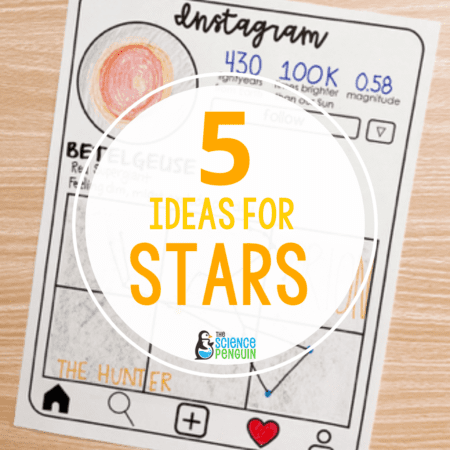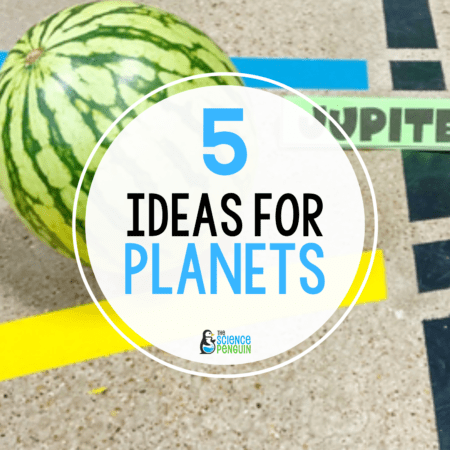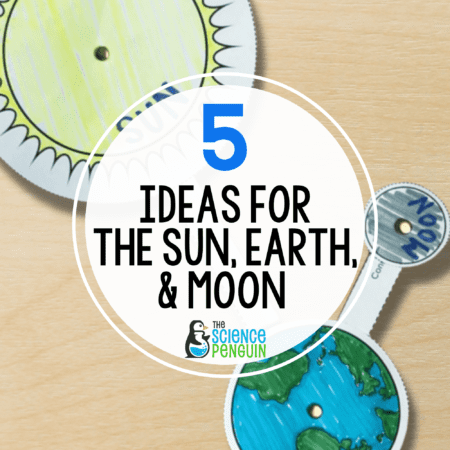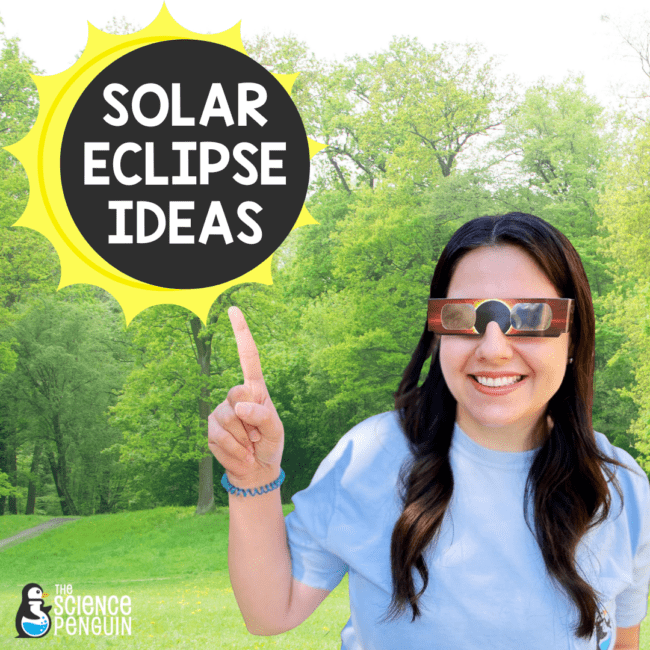
Let’s take a look at 6 ideas teachers can use to teach students about the 2024 solar eclipse.
What is a Solar Eclipse?
A solar eclipse takes place when the Moon positions itself directly between the Earth and the Sun. This alignment results in the Moon’s shadow being cast on Earth, momentarily dimming the Sun’s brightness for us.
1. Safely View the Eclipse
Are you in the path of totality on April 8, 2024? Allow your class to safely view the solar eclipse!
Get the glasses for fun, safe viewing. First and foremost, make sure your solar eclipse viewing glasses are legit. Regular sunglasses and 3-D movie theater glasses won’t cut it. Remind kids to NEVER look directly at the Sun!
Be sure your special viewing glasses fit well and follow the directions for use.
These observation sheets are perfect for REAL WORLD science! There are different options for recording drawings and environmental changes as well as higher-level activities like CER.
2. Teach About the Sun-Earth-Moon System
Let’s be sure to use proper scientific vocabulary when talking about the eclipse. Here are some important terms:
Rotation: the spinning of an object on its axis
Revolution: the orbit of an object around another body in space
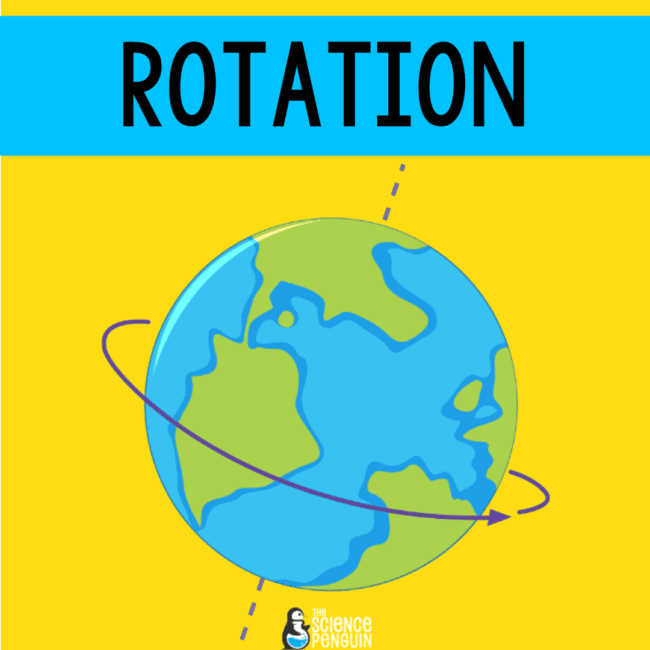

Since you’ll be outside anyway, grab some sidewalk chalk and draw the orbits and positions in the Sun-Earth-Moon system during a solar eclipse. Have fun walking the orbits!

3. Solar Eclipse 2024 Activities Pack
This is real-world science so let’s observe, experience, and learn with this PRINT AND GO resource!
Choose what works for your class to study the solar eclipse. Whether you observe the solar eclipse on April 8 or celebrate all week, we have plenty of activities!
See it on TPT: Solar Eclipse Pack
4. No-Prep Solar Eclipse Digital Choice Menu
Do your students like to choose how they learn? If so, they will love the Solar Eclipse Digital Choice Menu Board. This activity in Google Slides focuses on the characteristics of a solar eclipse and how it differs from a lunar eclipse.
9 Choices for Students
All slides, links, and activities are included!
✓ Research Writing: Write about the 2024 total solar eclipse.
✓ Crossword: Use your knowledge to complete the crossword.
✓ Graphic Organizer: Describe solar eclipses and lunar eclipses.
✓ Diagram: Label a diagram of a solar eclipse.
✓ Claim Writing: Support the claim about why the Moon can still block the Sun even though the Moon is much smaller than the Sun.
✓ Video: Watch a video about solar eclipses.
✓ Compare & Contrast: Compare and contrast solar and lunar eclipses.
✓ Card Sort: Sort cards into the correct category: solar or lunar eclipse.
✓ Research & Respond: Complete a table to identify the causes and effects of solar eclipses.
See it on TPT: Digital Choice Menu
5. Free Solar Eclipse Terminology Worksheet
This free printable can be used as a worksheet or in notebooks. Discuss and write about each term. Color in the diagram to represent each term.
Access this printable in the Science Penguin Free Resource Library exclusively for email subscribers.
Get the details on this vocabulary from our friend at Mad Garden Science.
6. Solar Prints
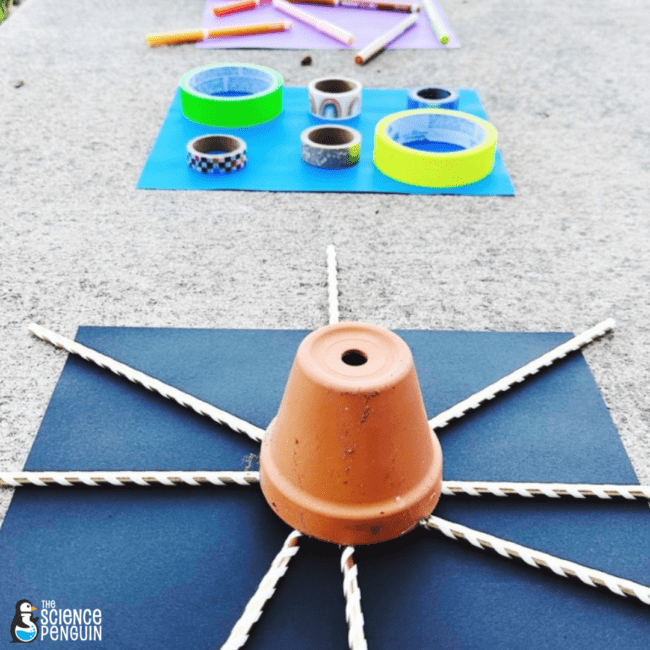
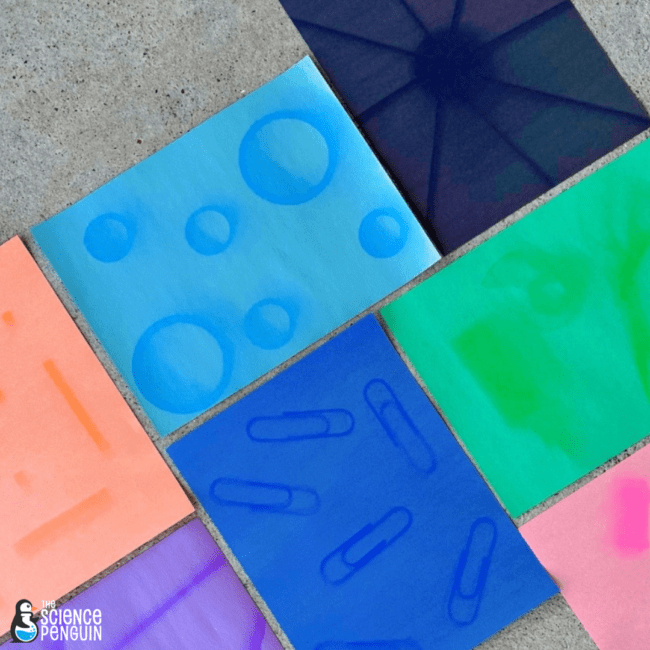
Let’s put the A in STEAM with this simple activity. You only need construction paper, a few items lying around, and a sunny day.
Make a design and leave it out on a sunny, non-eclipse day. (OR compare the effects of the Sun on an eclipse day and a typical day!)
Check back later and see your designs.
